PM Modi launches India’s first hydrogen-powered ferry built at Cochin Shipyard
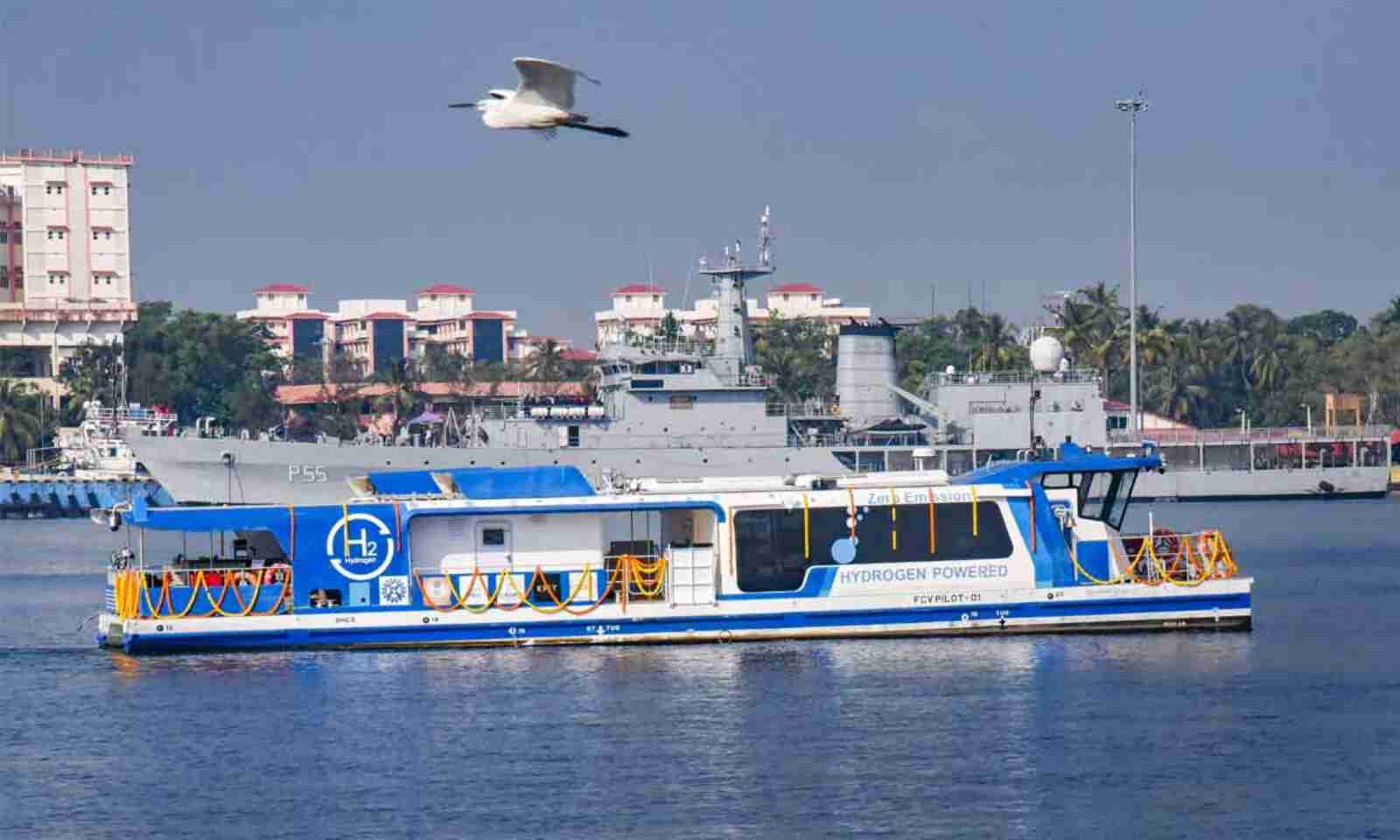
- 01 Mar 2024
Why is it in the News?
Prime Minister Modi recently virtually launched India’s first indigenously developed hydrogen fuel cell ferry manufactured by Cochin Shipyard Limited (CSL), which will be deployed for service at Varanasi in Uttar Pradesh.
What is the "Harit Nauka" (Green Boat) Initiative?
- Initiated by the Ministry of Ports, Shipping, and Waterways, "Harit Nauka" aims to facilitate a sustainable transition of inland vessels.
- In January 2024, the shipping ministry introduced the "Harit Nauka" guidelines, outlining the path towards environmentally friendly practices for inland vessels.
- According to these guidelines, all states are mandated to progressively adopt green fuels for 50% of their inland waterway-based passenger fleets within the next decade, to achieve 100% adoption by 2045. This initiative aligns with the Maritime Amrit Kaal Vision 2047, aimed at reducing greenhouse gas emissions.
- The implementation of this initiative not only contributes to reducing emissions but also paves the way for replicating such environmentally friendly ferry models across the country to enhance urban mobility.
- Furthermore, it serves as a significant catalyst for advancing the objectives of the National Green Hydrogen Mission.
What are Hydrogen Fuel Cells?
- Hydrogen fuel cells harness the chemical energy of hydrogen to generate electricity, offering a clean energy solution with electricity, heat, and water as the sole products and by-products.
Functioning:
- Similar to batteries, fuel cells continuously produce electricity and heat as long as fuel is supplied. A typical fuel cell comprises two electrodes—an anode (negative electrode) and a cathode (positive electrode)—surrounding an electrolyte.
- Hydrogen fuel is supplied to the anode, while air is directed to the cathode. At the anode, a catalyst separates hydrogen molecules into protons and electrons, which then travel different paths.
- Electrons create an electric current through an external circuit, while protons migrate through the electrolyte to the cathode, combining with oxygen and electrons to form water and heat.
Challenges in India:
- High Cost: Fuel cell systems remain relatively expensive compared to conventional energy sources.
- Infrastructure Deficiency: India currently lacks the necessary infrastructure for the widespread adoption of fuel cell technology, including hydrogen production and distribution networks.
- Technical Hurdles: Despite ongoing advancements, fuel cell technology is still in its nascent stages, facing persistent technical challenges.
- Policy Constraints: The absence of a comprehensive policy framework from the Indian government has constrained the development and adoption of fuel cell technology, impeding research and investment.
India's Initiatives:
- In response to these challenges, India has formulated the National Green Hydrogen Policy, delineating a vision for the growth of the hydrogen and fuel cell industry.
- The policy aims to position India as a global hub for the production, utilization, and export of Green Hydrogen and its derivatives, signalling a strategic commitment to advancing sustainable energy solutions.
Characteristics of the Hydrogen-Powered Ferry:
- Length and Capacity: The hydrogen fuel cell vessel is a 24-meter-long catamaran, capable of accommodating up to 50 passengers in its air-conditioned passenger area.
- Battery-Free Operation: Distinguished by its innovative design, this ferry does not rely on conventional batteries for storing electrical energy.
- Instead, it utilizes hydrogen fuel, stored in cylinders onboard the vessel. With five hydrogen cylinders capable of carrying 40kg of hydrogen, the ferry can sustain operations for eight hours. Additionally, it features a 3-kW solar panel to complement its power source.
- Fuel Cell Technology: Equipped with a 50-kW PEM (proton-exchange membrane) fuel cell, coupled with Lithium-Ion Phosphate batteries, the ferry boasts adaptability in response to varying power demands.
- PEM fuel cells, renowned for their lower operating temperature, lightweight, and compactness, are commonly employed in automotive applications.
- Environmental Sustainability: With zero emissions and noise, coupled with enhanced energy efficiency, the hydrogen fuel cell-powered ferry stands as an environmentally friendly alternative.
- Its minimal moving parts contribute to reduced maintenance requirements compared to combustion vessels.
- Additional Advantages: While hydrogen fuel cell technology has been in development for maritime purposes, only a handful of countries worldwide have executed demonstration projects.
- Thus, this ferry positions India at the forefront, providing an early advantage in harnessing the potential of hydrogen as an emerging green fuel within the marine sector.
Doomsday Glacier has lost 50 billion tons of ice, melting began 80 years ago
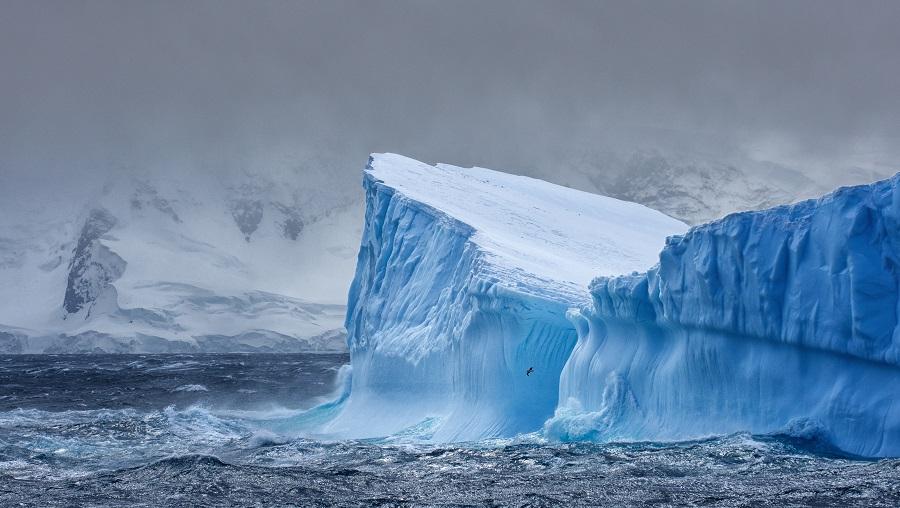
- 01 Mar 2024
Why is it in the News?
Antarctica's Doomsday Glacier, the world's widest glacier, has lost over 50 billion tons of ice and the melting rate is on the rise as the continent gets warmer.
What is Doomsday Glacier?
- The Thwaites Glacier (also known as Doomsday Glacier), a massive and world’s widest glacier is located in West Antarctica.
- The Doomsday nickname reflects the potential for catastrophic flooding if the glacier were to collapse completely.
- Scientists are particularly concerned about Thwaites Glacier because of its size and location.
- If it were to collapse or significantly retreat, it could lead to a more rapid flow of ice from the interior of West Antarctica into the ocean, contributing to rising sea levels.
- The collapse could lead to a 65 cm rise in global sea level.
- The ice loss in the region has been observed to be accelerating since the 1970s, however, so far it remained unclear as to when this retreat began.
- The significant glacial retreat began in the 1940s and the findings coincide with previous work that studied retreat on Pine Island Glacier and found glacial retreat began in the ‘40s as well.
- This change is not random nor specific to one glacier but It is part of a larger context of a changing climate.
Why Did the Melting Begin?
- The meeting was kicked off by an extreme El Nino climate pattern that warmed the west Antarctic, and since then the glacier has not been able to recover from the damage.
- It is significant that El Niño only lasted a couple of years, but the two glaciers, Thwaites and Pine Island remain in significant retreat.
- Once the system is kicked out of balance, the retreat is ongoing.
- The Doomsday Glacier's melting remains one of the most crucial events triggered and accelerated by climate change and could lead to the submergence of several coastal regions of the world.
ZSI names a newly discovered head-shield sea slug after President Droupadi Murmu
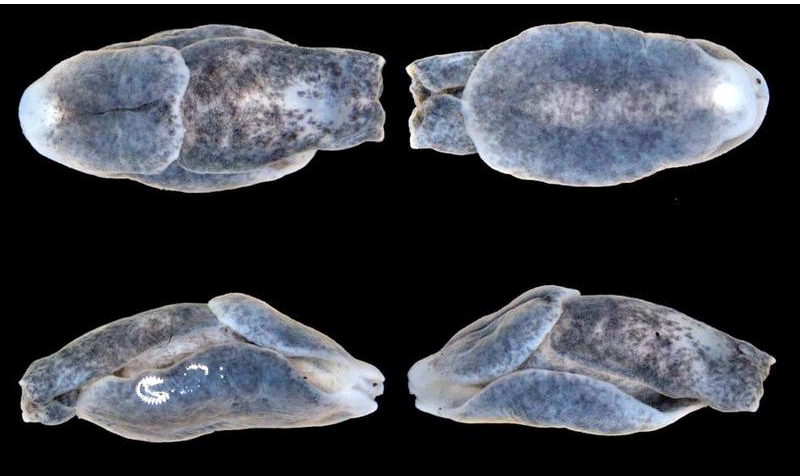
- 01 Mar 2024
Why is it in the News?
The Zoological Survey of India named a new marine species of head-shield sea slug with ruby red spot which was discovered from West Bengal and Odisha coast after President of India Droupadi Murmu.
About Melanochlamys Droupadi:
- Melanochlamys Droupadi is a newly discovered marine species of head-shield sea slug distinguished by its striking ruby red spot.
- This species, belonging to the Melanochlamys genus, was first identified along the coasts of Digha in West Bengal and Udaipur in Odisha.
Key Features:
- This small invertebrate typically measures up to 7 mm in length.
- It primarily inhabits wet and soft sandy beaches.
- Adorned in brownish-black hues, it features a distinctive ruby-red spot towards its hind end.
- Melanochlamys Droupadi exhibits hermaphroditic characteristics, possessing both male and female reproductive organs. However, it requires another sea slug for successful reproduction.
- Internally, it possesses a shell and a posterior segment comprising 61 per cent of its body length.
- To safeguard against sand infiltration, it continuously secretes transparent mucus, forming a protective sheath around its body.
- When in motion, it burrows beneath smooth sand, creating a moving capsule where its body remains mostly concealed, akin to a turtle, leaving behind a discernible trail.
What are Sea Slugs?
- Sea slugs are a diverse group of molluscs inhabiting marine environments, characterized by their slug-like appearance.
- They occupy a wide range of habitats, spanning from shallow intertidal zones to the depths of the ocean, and from polar regions to tropical waters.
- As agile predators, sea slugs prey on mobile organisms such as other shelled and unshelled sea slugs, roundworms, marine worms, and small fish.
- Currently, researchers have identified 18 species of sea slugs worldwide.
- While sea slugs predominantly inhabit temperate regions within the Indo-Pacific Oceanic realm, three species exhibit truly tropical distributions: Melanochlamys papillata from the Gulf of Thailand, Melanochlamys bengalensis from the West Bengal and Odisha coast, and the newly discovered species.
World's First Vedic Clock to be Unveiled by PM Modi in Ujjain
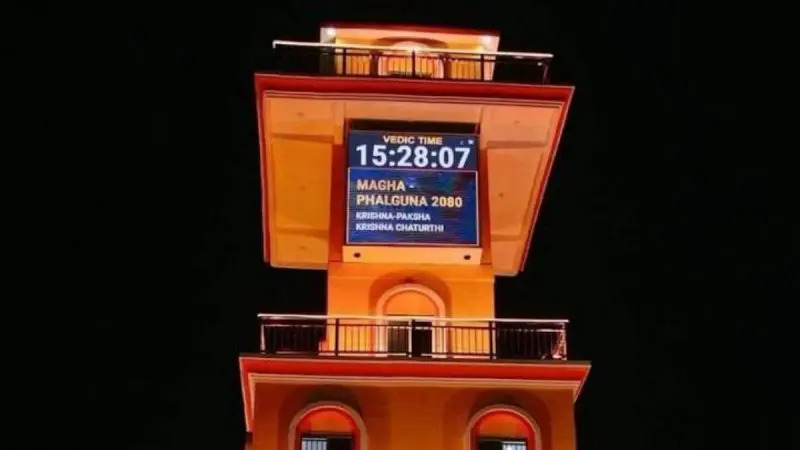
- 01 Mar 2024
Why is it in the News?
Prime Minister Narendra Modi inaugurated the Vedic Clock in Ujjain as part of the 'Vikramotsav' celebration in Madhya Pradesh.
Features of the Vikramaditya Vedic Clock:
- This is the world's first 'Vedic Clock', designed to display time according to the ancient Indian traditional Panchang (time calculation system).
- The clock is installed on an 85-foot high tower constructed at Jantar Mantar in Ujjain, adjacent to the Government Jiwaji Observatory.
- It will display 30 Muhurats, tithi, and all other time calculations of Vedic Hindu panchang.
- Additionally, Samvat, Mas, moon position, Parva, Shubhshubh Muhurat, Ghati, Nakshatra, solar eclipse, and lunar eclipse, among other things
- It will be the world’s first clock in which Indian time calculation will be displayed.
- The Vedic clock installed in Ujjain as the city has been considered the centre of time calculation.
- The Tropic of Cancer passes through Ujjain.
Time calculation:
- The unique timepiece calculates time-based on Vedic Hindu Panchang, planetary positions, Muhurat, astrological calculations, solar eclipse, and lunar eclipse, among other things, and also indicates the Indian Standard Time (IST) and Greenwich Mean Time (GMT).
- The period from one sunrise to the next is used to calculate time.
- The clock will calculate time from one sunrise to another.
- The time period between the two sunrises will be divided into 30 parts, with each hour consisting of 48 minutes according to ISD.
- The reading will start from 0.00 with the sunrise functions for 30 hours (an hour of 48 minutes).
- Also, there will be a dedicated mobile application for the readings of the Vedic Clock, and citizens will be able to use it on their smartphones, computers, televisions, and other devices.
Why It is Located in Ujjain?
- The standard time of the world was determined from Ujjain 300 years ago.
- Throughout the world, the time prescribed and transmitted from Ujjayini (Ujjain) has been followed.
- The shortest fraction of time is included in Indian time calculations based on the Indian astronomical theory and the motions of planetary constellations.
- Ujjain was previously thought to be India’s central meridian, and the city determined the nation’s time zones and time differences, according to Hindu astronomical belief.
- The city of Lord Mahakal is situated exactly where the Tropic of Cancer and Zero Meridians meet.
- Additionally, it is situated in the oldest observatory in India, which Sawai Jai Singh II of Jaipur constructed in the early 1700s.
- Mirzapur in Uttar Pradesh, which is located at 82°30’ East longitude, is the location of the zero meridians on the Prime Meridian, or IST, four hours ahead of GMT, according to the 1884 convention on meridians.
India to set up International Big Cat Alliance
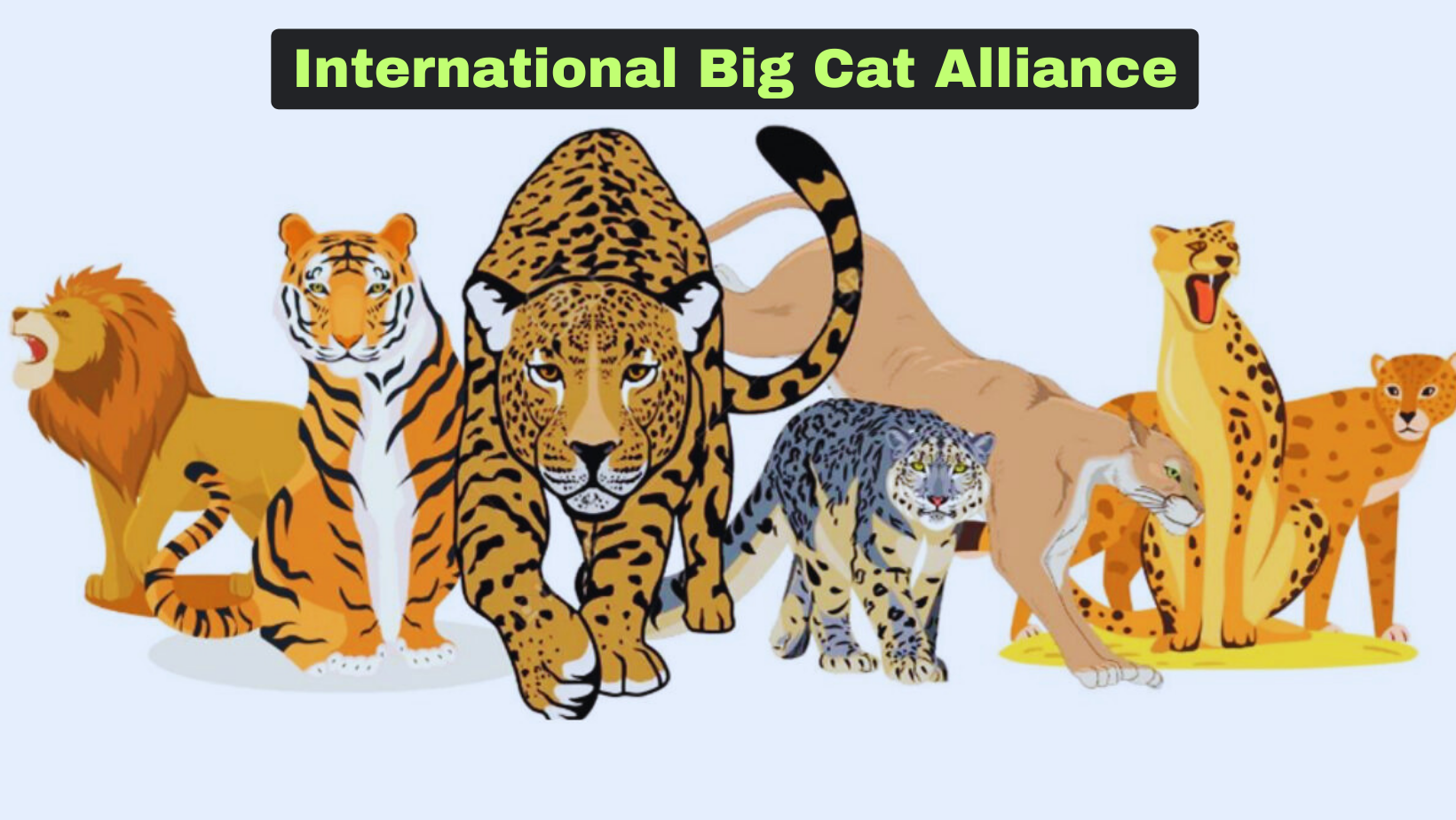
- 01 Mar 2024
Why is it in the News?
The Union Environment Ministry plans to set up and coordinate an International Big Cat Alliance (IBCA), along the lines of the International Solar Alliance, an India-headquartered initiative to promote solar installations globally.
About the International Big Cat Alliance (IBCA):
- The idea of the International Big Cat Alliance (IBCA) was first given by Prime Minister Modi during his speech on the occasion of Global Tiger Day in 2019.
- He called for developing an alliance of global leaders to curb poaching in Asia.
- The alliance was formally announced on April 9, 202, in Mysuru, as India commemorated the completion of 50 years of Project Tiger.
- The alliance will focus on the conservation of seven big cats, which include Tiger, Lion, Leopard, Snow Leopard, Puma, Jaguar, and Cheetah. Out of these, five are found in India.
- Membership to the IBCA is open to 97 'range' countries, encompassing the natural habitats of these big cats, as well as other interested nations and international organizations.
- The alliance aims to facilitate cooperation among countries to advance the conservation agenda for mutual benefit.
- Operating with a multifaceted approach, the IBCA endeavours to establish robust linkages across various domains, including knowledge sharing, capacity building, networking, advocacy, financial and resource support, research, technical assistance, education, and awareness.
- Governance of the alliance consists of a General Assembly comprising all member countries, a Council comprised of seven to fifteen member countries elected by the General Assembly for a five-year term, and a Secretariat.
- The IBCA Secretary General, appointed by the General Assembly upon the Council's recommendation, serves a specific term.
- To support its initiatives, the IBCA has secured initial funding of Rs. 150 crore from the Government of India for the period spanning from 2023-24 to 2027-28.
